Are your projects ever delayed, over budget, or chaotic? It might be time for a new approach.
Discover how dedicated PPM tools can help streamline your project management processes and improve project outcomes.
Imagine this: your team just wrapped up another project, and everyone’s exhausted—but instead of celebrating, you’re left scrambling to sort out loose ends, unaddressed risks, and missed deadlines. Sound familiar?
Projects are becoming increasingly complex, goals more ambitious, and stakeholder expectations higher than ever. Yet, some teams still rely on outdated methods and manual tracking, hoping it will magically pull everything together. Spoiler alert: it won’t.
This is where modern project and portfolio management (PPM) tools come in, designed to make your life a whole lot easier. With features like real-time monitoring, streamlined communication, and templates for every project phase, these tools don’t just keep projects on track—they help your team perform at their peak.
Ready to find out if it’s time for an upgrade? Here are 5 telltale signs you can’t ignore.
Let’s be honest—jumping into a project without a structured roadmap is a recipe for chaos.
Projects with inconsistent goals and weak initiation phases stumble early on, leaving the project team scrambling to make sense of “what success actually looks like.”
When the initiation phase is skipped or lacks clarity, confusion around project goals, scope, and deliverables is inevitable.
And the ripple effect? Missed milestones, overlapping workflows, and wasted resources. Stakeholders expect seamless execution, but without a solid foundation, bottlenecks, scope creep, and delays quickly derail the project.
The Solution? A structured initiation phase with precise goals, clear deliverables, and well-defined timelines.
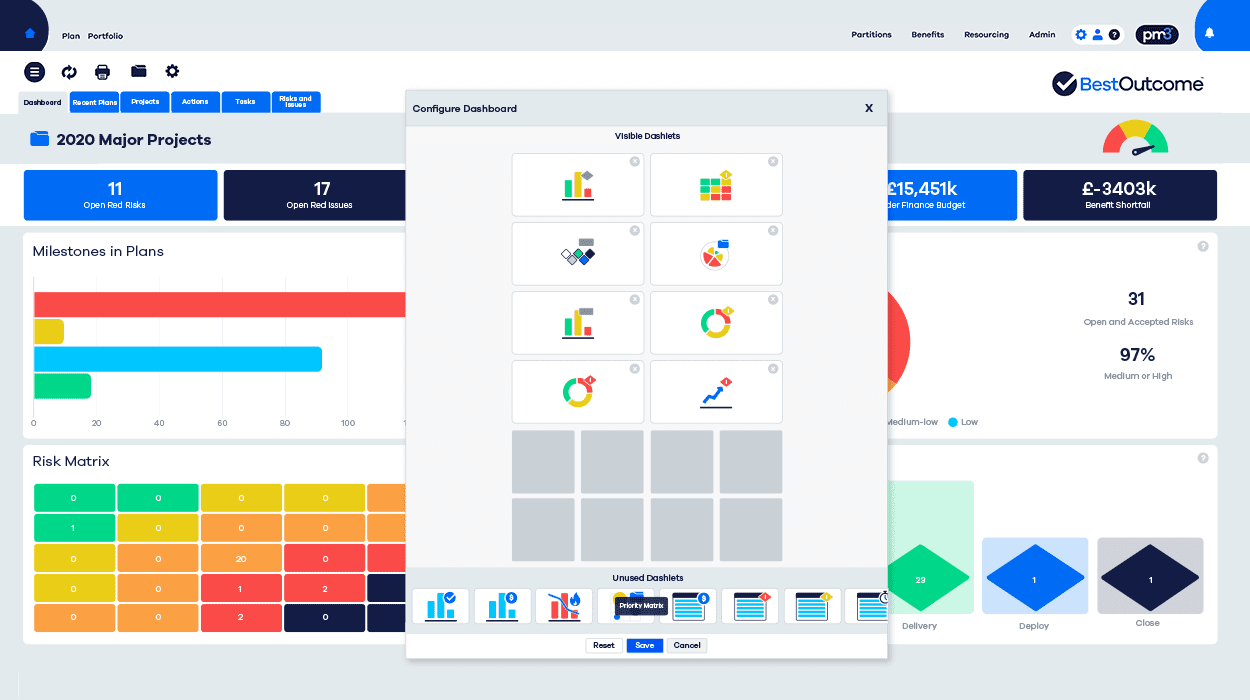
Using a PPM tool here can be game-changing. Start by crafting a robust project charter, which outlines the business case, objectives, and key stakeholders, setting expectations from day one. Then build out your project plan, using tools like Gantt charts and Kanban boards to define dependencies, workflows, and key deliverables.
Templates provided by project management software—often aligned with PMI standards—can guide you through developing SMART (Specific, Measurable, Achievable, Relevant, Time-bound) goals, work breakdown structures (WBS), and a feasible project schedule.
Project management tools help teams visualise the project life cycle, from initiation to project closure, and ensure alignment through dashboards that offer real-time monitoring of progress, KPIs, and metrics. With built-in communication plans and templates, you can engage stakeholders early, set up iterative reviews, and track project progress with confidence.
A well-structured initiation phase, supported by project management tools and clear documentation, not only streamlines execution but also empowers the team to proactively manage risks, dependencies, and unforeseen bottlenecks.
This level of preparation doesn’t just prevent issues in the current project; it builds a foundation of best practices that your team can carry into every future project.
When your project management process relies on old templates and plans that haven’t evolved, it creates more problems than it solves.
Static templates and rigid plans ignore the realities of modern project dynamics, from shifting stakeholder expectations to the need for agile adjustments throughout the project life cycle.
What’s more, outdated plans can mask potential bottlenecks, fail to account for crucial dependencies, and create an illusion of order while stalling actual project progress.
The reality is that today’s project management demands flexibility and real-time adjustments. A project plan shouldn’t be a rigid, once-and-done document; it needs to be a living, breathing guide that adapts with every milestone, sprint, and phase. Without this adaptability, issues like scope creep, resource misalignment, and missed deliverables quickly pile up, affecting project success and frustrating both stakeholders and team members.
The Solution? Embrace agile project management tools that provide up-to-date templates and project plans designed for the current landscape.
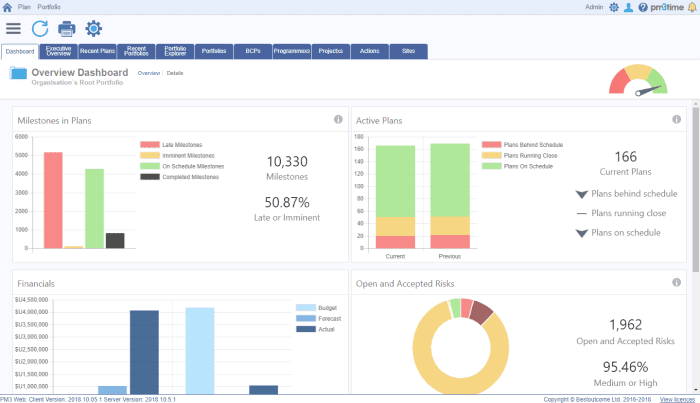
Modern PPM tools go beyond static documents, offering live dashboards, customisable templates, and features that allow you to track progress, manage dependencies, and even reallocate resources in real time.
For instance, agile-friendly templates and Kanban boards help visualise workflows and make it easier to adjust priorities as project requirements evolve.
Using templates and Gantt charts that are pre-built to fit specific project management methodologies (whether you’re working with Waterfall, Scrum, or Lean) allows your team to tackle the planning phase with the right structure from the start.
Updated templates not only save time, but they also streamline each phase of the project, from initiation through project closure, by clearly defining the roadmap, dependencies, and KPIs needed to track progress.
With PPM tools that integrate work breakdown structures (WBS) and automate task tracking, you’re no longer forced into a one-size-fits-all project plan.
This shift means that every new project, regardless of its unique demands or scope, is equipped with templates and project plans that promote adaptability, real-time insights, and a level of strategic control that older templates just can’t offer.
Imagine steering a massive ship with a tiny, unresponsive rudder. That’s what it’s like running projects with inflexible processes in today’s fast-paced environment.
A rigid project management process might look fine on paper, but when new risks arise, goals shift, or resources need reallocation, these static processes can make adapting nearly impossible. The result? Your project becomes a sluggish machine, weighed down by processes that no longer serve the team’s needs or the project’s objectives.
Inflexibility often shows up in the choice of project management methodology. While traditional methods like Waterfall have their place, they can be overly rigid for projects requiring iterative development, rapid response times, or frequent stakeholder feedback. When your team is stuck in linear processes that don’t allow for agile adjustments, progress stalls, timelines extend, and project deliverables suffer.
The Solution? Adopt a flexible, iterative approach that enables quick adaptation to changing needs, such as Agile project management or a hybrid method that combines Agile with Waterfall elements. Project management software offers powerful tools here: agile-friendly features like Sprints, Kanban boards, and Scrum workflows enable teams to break work into manageable increments, track project progress closely, and pivot when necessary.
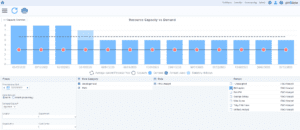
A robust resource management system within a PPM tool can also make a huge difference. With real-time updates on resource availability, workload, and dependencies, team members can adjust quickly, reallocating resources or shifting priorities without derailing the entire project.
Dashboards and performance indicators (KPIs) provide instant insights into where adjustments are needed, helping the project team respond proactively instead of reacting too late.
To keep everything streamlined, build in a communication plan that includes regular check-ins and project monitoring touchpoints. This way, you’re not just passively observing progress; you’re engaged in the project life cycle, identifying risks and bottlenecks before they escalate.
In today’s world, project management processes need to be dynamic and responsive, equipped to handle every twist and turn in the road. By embracing an adaptable approach, you position your team not just to meet project objectives, but to exceed them.
Addresses the importance of real-time project monitoring and effective project execution to stay aligned with project goals and timelines.
Your team’s putting in the hours, tasks are being checked off, but somehow, project progress feels stuck. If your project monitoring and execution processes aren’t equipped to deliver real-time insights, identify red flags, and support seamless adjustments, inefficiencies will creep in fast.
Without effective monitoring, tasks slip through the cracks, resource allocation gets lopsided, and deadlines start feeling like wishful thinking. Projects aren’t just about getting work done—they’re about tracking the right KPIs, making sure deliverables align with expectations, and continuously optimising as new information comes in.
Limited monitoring also means missing out on critical project metrics that reveal hidden issues impacting timelines, budget, or quality. Without visibility into execution data, project leaders can’t make informed decisions, and what started as a strategic plan becomes a shot in the dark. A disorganised execution phase not only disrupts current projects but risks setting a pattern of inefficiency that bleeds into future projects.
The Solution? Leverage modern PPM tools to enable real-time, data-driven monitoring throughout the execution phase.
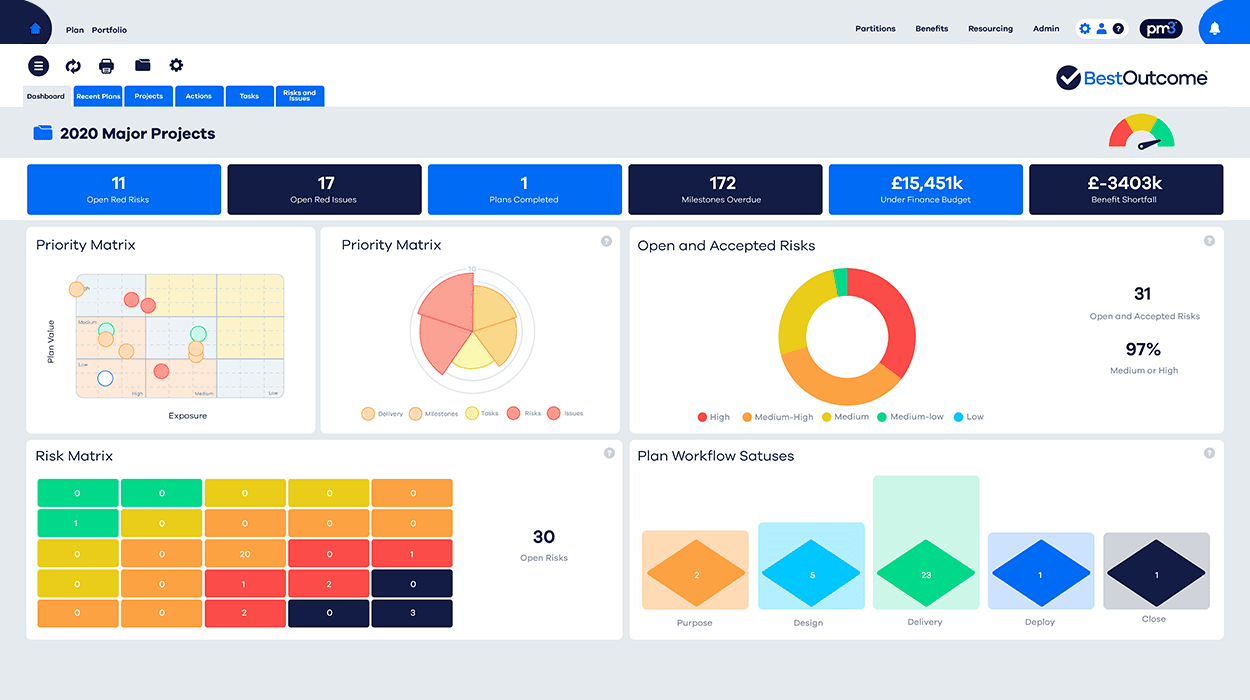
Advanced project management software offers intuitive dashboards that track progress, display task dependencies, and update performance indicators in real time, making it easier to address bottlenecks before they impact project outcomes. Tools like resource tracking and real-time dashboards give project leaders a comprehensive view of resource allocation, task completion rates, and overall project health, while customisable KPIs provide a laser focus on what really matters for project success.
Incorporating agile metrics—like burn-down charts and velocity tracking—can be transformative, especially if your team operates in an iterative framework.
For traditional or hybrid methods, variance analysis and milestone tracking keep the project aligned with initial plans and budgets.
Automated reporting tools within PPM software generate updates that make project status crystal clear for all stakeholders, reducing the need for manual check-ins or redundant meetings.
Don’t underestimate the value of continuous monitoring in making your project management process proactive rather than reactive. With the right tools and metrics, your team gains the insight needed to keep projects moving smoothly, meet deliverable deadlines, and achieve every project objective with precision. By strengthening monitoring and execution, you’re not just enhancing efficiency—you’re setting your team up for reliable, repeatable success in every project phase.
When a project reaches its end, skipping a thorough closure process is a missed opportunity. Without taking time to formally wrap up, review performance, and gather insights, valuable information is lost that could significantly benefit future projects.
An incomplete closure often means deliverables are left unverified, stakeholder feedback is overlooked, and lessons learned go undocumented. This gap in process not only impacts project success but can lead to repeated mistakes, resource inefficiencies, and a lack of continuous improvement.
A strong closure phase is essential to fully assess project outcomes against initial goals, timelines, and budgets. Reviewing project deliverables, milestones, and performance indicators allows the team to gauge how effectively they met project objectives.
Additionally, engaging with stakeholders during closure provides important feedback that can inform better alignment and clearer expectations in the next project.
The Solution? Build a structured closure process that ensures every aspect of the project is evaluated and documented. Start by verifying that all deliverables meet the criteria set out in the project plan, and conduct a final project review to analyse outcomes, resources used, and timelines.
Project management tools with dedicated templates for post-project analysis and closure checklists can help structure this phase, making it straightforward to track key data and gather insights.
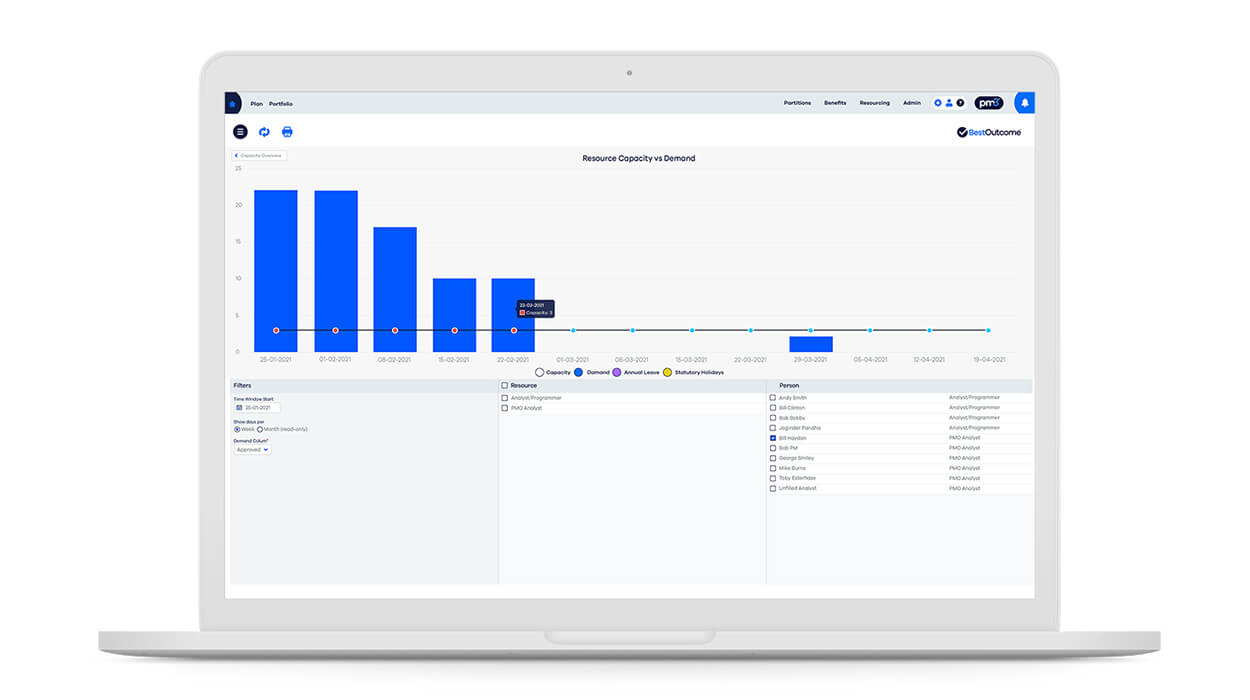
Documentation should include insights on resource allocation, timeline adherence, and any unexpected obstacles or changes in project scope.
Many PPM tools support knowledge sharing by storing closure notes and lessons learned in a centralised, accessible database. This practice not only aids the current project but serves as a useful reference point for future initiatives, promoting a cycle of continuous improvement.
By making closure a priority, project teams can turn each experience into actionable knowledge, build trust with stakeholders, and refine processes. A complete, data-informed closure phase ensures each project contributes to more efficient and successful outcomes in the future.
So, where does your project management process stand? If you’ve recognized any of these signs in your projects—unclear goals, outdated plans, rigid processes, limited monitoring, or incomplete closures—it may be time for an upgrade.
Project management isn’t just about ticking tasks off a list; it’s about having a flexible, data-driven system that adapts to challenges and positions your team for success.
Take a step back, evaluate your current approach, and ask: is it driving the results you want? If not, consider investing in a robust, adaptable project management system that keeps your team ahead of the curve. After all, successful projects aren’t just completed—they’re built on a foundation of continuous improvement and strategic growth.
Modern project and portfolio management (PPM) tools can be the game-changer, providing real-time tracking, agile workflows, resource optimisation, and seamless project documentation.
BestOutcome specialises in Project, Programme, and Portfolio Management (PPM) software and services, helping organisations deliver successful business change. Our PM3 software is a leading PMO tool that supports structured, outcome-driven project management.
Our expertise spans a range of industries, including Finance, Energy, Retail, Public Sector, and Manufacturing. As an ISO27001-certified company, we ensure the highest standards of security and compliance, and our PM3 product range is available via the UK Government Digital Marketplace Catalogue.

Our products help you deliver successful change programmes and projects by always focusing on the overall business outcomes. Find out how our products can help you.
Discover PM3 Request a DemoAre you struggling to understand how to plan a project that keeps you and your team on target? In th...
Read more >...
Read more >